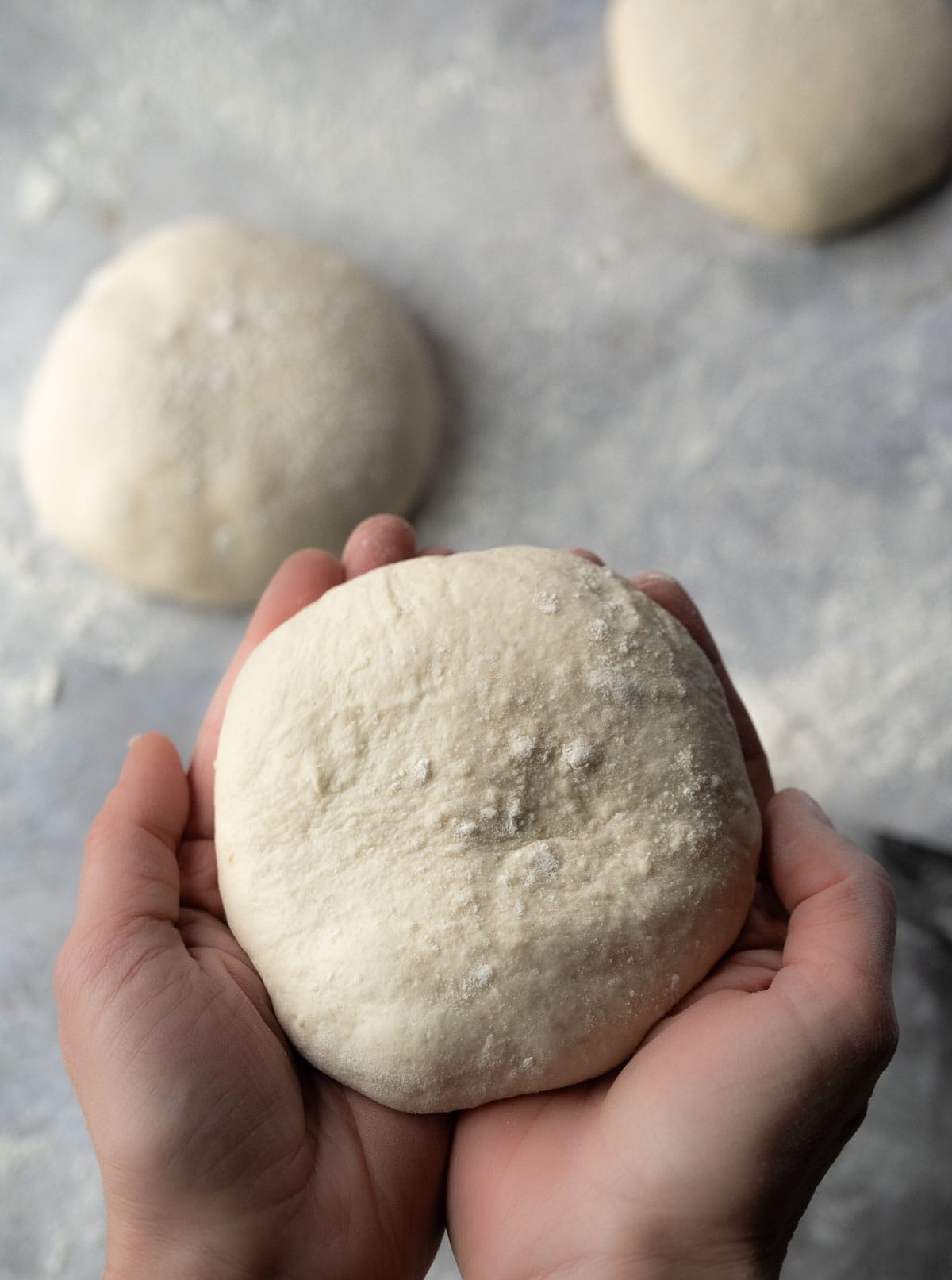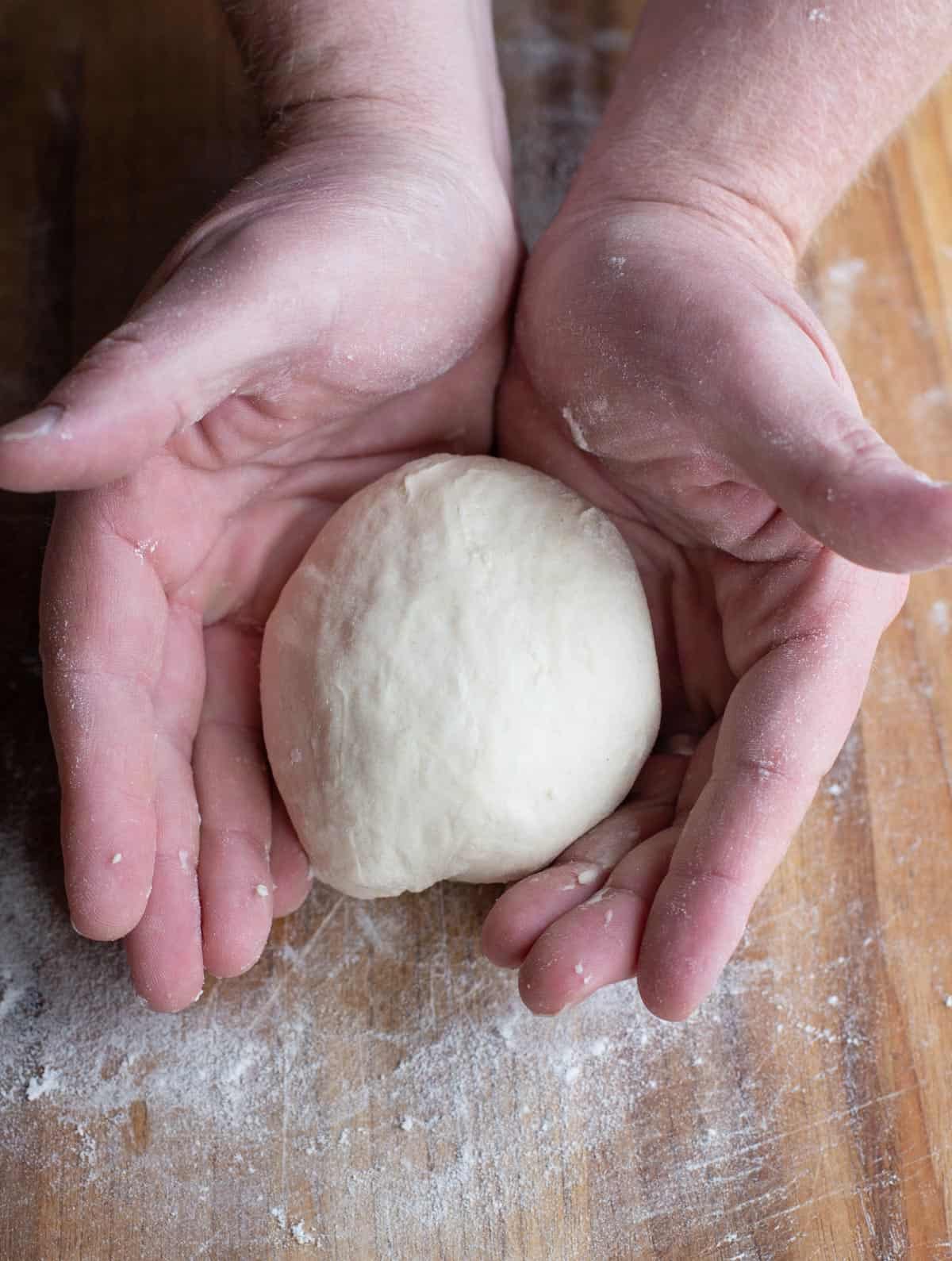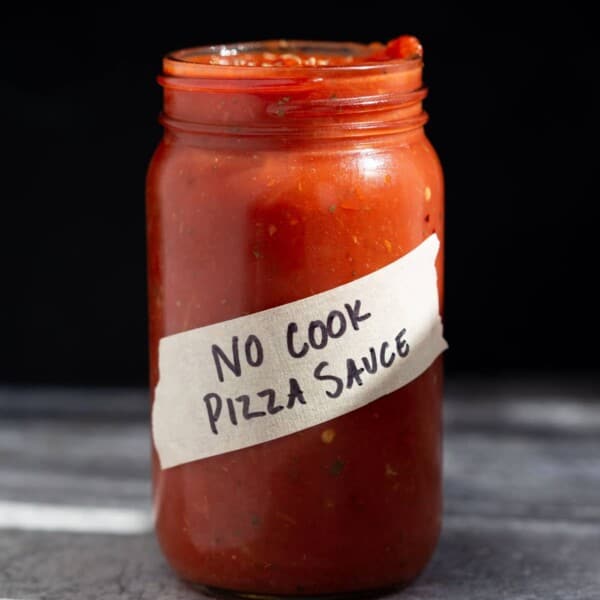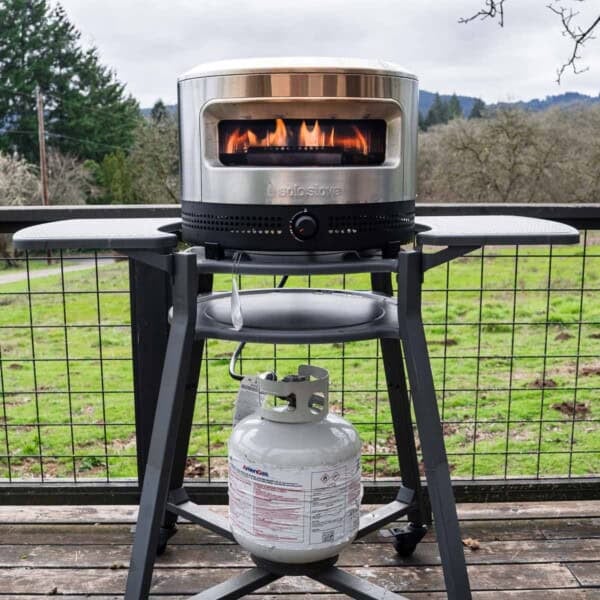Can You Freeze Pizza Dough? Yes—Here’s How
Apr 08, 2025
This post may contain affiliate links. Read more at our disclosure policy.
Making pizza dough from scratch is one of the most rewarding parts of pizza night – but let’s be real: sometimes life gets in the way. Whether you’re prepping for a pizza party or just want to save time on a weeknight, freezing your pizza dough is a smart move. And can you freeze pizza dough? Yes, you can – and when done right, it still bakes up with great flavor and texture.

We have cooked a lot of pizza recipes. As cookbook authors of Fire + Wine Backyard Pizza, doing demos, and at events, we have also had lots pizza dough. Let’s walk through exactly when and how to freeze dough, how to thaw it properly, and tips to get the best results. Just like we do when we have extra after an event.
Table of Contents
- Can You Freeze Pizza Dough?
- When to Freeze Your Dough
- Step-by-Step: How to Freeze Pizza Dough Properly
- Chef’s Tip
- How Long Can You Freeze Pizza Dough?
- How to Thaw Frozen Pizza Dough
- Can I Freeze Unused Dough?
- Signs Your Dough Didn’t Survive the Freezer Well
- Tips for Making Freezer-Friendly Dough
- Frequently Asked Questions
- Final Thoughts
- Other Pizza Resources
Can You Freeze Pizza Dough?
Yes, pizza dough freezes beautifully! Whether you’re working with a simple same-day dough or a multi-day sourdough pizza dough, most yeasted doughs can be frozen without sacrificing quality. The key is to freeze it at the right point in the process and store it properly to preserve its structure and flavor.

This technique works for both home ovens and high-heat pizza ovens like Alfa Forni, Solo Stove Pizza Ovens, or Big Green Egg pizza setups.
When to Freeze Your Dough
The ideal time to freeze pizza dough is after the first rise (bulk fermentation). This gives the yeast time to activate and build flavor, but stops the fermentation process before it goes too far.
Freezing dough too early (like before any rise) can lead to poor texture, and freezing after shaping can make it difficult to work with later.
After that first rise, divide and ball your dough, work it with your hands for developing gluten, then freeze.
When you thaw the fermentation process will activate again, and you will find that the dough balls will start rising once they have thawed. Especially at room temperature.
Step-by-Step: How to Freeze Pizza Dough Properly
Here’s how we recommend freezing dough:

- Let your dough rise through bulk fermentation (anywhere from 3 to 8 hours depending on your recipe).
- Divide into individual pizza-sized balls – usually 250 to 300 grams each for a 12-inch pizza. We strongly recommend you use a digital scale with a bench scraper.
- Lightly coat each ball with olive oil to prevent sticking and drying out. A little goes a long way.
- Wrap each dough ball tightly in plastic wrap, then place on a sheet tray. This will help them maintain their shape as they freeze and sit easier in your freezer. Small containers also work.
- Label and date your dough, especially if you’re freezing multiple batches or dough types. A sharpie works best, label them after you have wrapped them.
- Lay them in the freezer to save space and freeze faster. Once they have fully frozen, you can remove them from the tray and store them on their own.
Explore all of our must-have pizza tools.
Chef’s Tip
We like to make larger batches of pizza dough specifically so we can freeze them. Then for our pizza parties, we can just remove them, thaw, and then bake.
How Long Can You Freeze Pizza Dough?
For best results, use frozen pizza dough within 2 to 3 months. While it can technically last longer, the texture and flavor may start to degrade over time, especially if exposed to freezer burn.
That is why we recommend you date your pizza dough balls so you can use the oldest ones first.
How to Thaw Frozen Pizza Dough
There are two solid options to thaw your dough:
- Overnight in the fridge: Remove the dough from the freezer and place it (still wrapped) in the refrigerator for 8–12 hours. Once they have fully thawed in that timeframe they will start to rise again.
- Room temperature thaw (faster): Leave the dough out on your counter or on a sheet tray, wrapped for 5 – 6 hours. As they thaw you will see them start to rise again in the plastic wrap. This is why you oiled them first, so they are easier to remove from the plastic.
After thawing, always let the dough rest at room temperature for at least 60 minutes, ideally two hours before stretching. This allows the gluten to relax and makes shaping easier.

Avoid microwaving frozen dough—it leads to uneven thawing and cooked edges, which you don’t want.
Can I Freeze Unused Dough?
If you have unused dough from your pizza party, you can still freeze it. Follow the same directions as noted, and label it as unused dough ball. Since it went through secondary fermentation, it will likely not rise much more and should be used sooner than others that were frozen before the second rise.
Would you like to save this?
Signs Your Dough Didn’t Survive the Freezer Well
While most dough freezes well, here are a few red flags that something went wrong:
- Freezer burn or dry, cracked edges – this comes from the plastic wrap not being tight enough or fully wrapped.
- Sour or off smells that weren’t there before freezing.
- Dough that is overly sticky, tears easily, or refuses to stretch. This maybe a sign of a dough that was previously frozen and often what happens with store-purchased dough.
If you see any of those signs, it’s better to toss it and start fresh.
Tips for Making Freezer-Friendly Dough
Want to maximize your results? Keep these tips in mind:
- Use bread flour or 00 flour for better gluten development and structure. Or consider mixing the two. They have higher amounts of protein than all purpose flour.
- Add just a touch more yeast if you know you’ll be freezing the dough—this helps wake it up after thawing.
- Freeze dough in individual portions—don’t try to freeze one big batch.
Frequently Asked Questions
Yes! Dough with things like garlic, herbs, or infused oils can still be frozen—just make sure it’s gone through its first fermentation before freezing.
Generally yes, but results may vary depending on the recipe. Gluten-free pizza dough tends to be more delicate and may need extra care during thawing. Our recipe can be frozen.
We don’t recommend freezing raw shaped dough—it’s harder to handle later. But you can parbake crusts, freeze them, and top later for faster weeknight pizzas. But we find it’s easier to just freeze the dough balls and then they are ready to form and bake.
Final Thoughts
Freezing pizza dough is a simple way to take the stress out of pizza night. When done properly, it gives you the flexibility to prep ahead without sacrificing quality. Whether you’re firing up a pizza oven or using your backyard grill, having dough ready to go makes the process smoother and more fun.
Tried this recipe? Give us a star rating and we would love to see! Mention @vindulge or use the hashtag #vindulge on all the social media handles. And consider subscribing to our newsletter where we drop all our favorite ideas and inspirations every week.

Pre-order now – Drops April 1st
Fire + Wine Backyard Pizza
Elevate your backyard pizza game in your grill or pizza oven with techniques and recipes for perfect outdoor pizza. The book also includes wine pairing inspirations for each recipes.
Other Pizza Resources
Food Recipes
Homemade Pizza Sauce – No Cooking Required
Pizza Recipes
How To Use An Outdoor Pizza Oven
Product Reviews



























